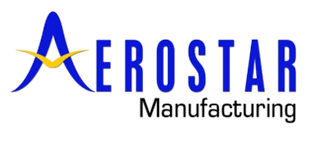Some reports have found the forging market is set to see an increase in the coming years.
According to PR Newswire:
According to a recent market study published by Growth Market Reports titled, “Global Forging Market by Type (Impression die forging, Cold forging, Open die forging, Seamless rolled ring forging), by Metals/Raw Materials (Aluminum, Magnesium, Copper/Brass/Bronze, Micro alloy, Special steel alloy, Carbon and Stainless Steel, Nickel based, Titanium, Refractory metals, Zirconium) by Application (Automotive [Light Commercial Vehicles, Medium & Heavy Commercial Vehicles], Aerospace, Oil & Gas, Agriculture, Mining, Construction, Power Generation, Machinery, Hydraulic & other Machinery, Ordnance, Others), and by Region : Size, Share, Trends and opportunity Analysis, 2018-2028”, the market was valued at USD 71,027.8 Million in 2019 and is expected to grow at a healthy growth rate of 4.8% by the year 2027. The forging market is anticipated to grow significantly during forecast period due to rise in demand for new an advanced part from the manufacturing of automobiles, aircrafts, shipbuilding, as well as construction, agricultural tools. Forged parts are preferred in many applications for their strength and sturdiness.
Key Market Players Profiled in the Report
Bharat Forge Limited
ELLWOOD Group Inc
Kalyani Forge Ltd.
KITZ Corporation
Precision Castparts Corp
Nippon Steel & Sumitomo Metal
Thyssenkrupp AG
VDM Metals GmbH
Allegheny Technologies Incorporated
Precision Castparts Corp
American Axle & Manufacturing, Inc
Aubert & Duval S.A
Arconic Inc
Schuler AG
Sypris Solutions, Inc
Lucchini RS S.p.A
The report covers comprehensive data on emerging trends, market drivers, growth opportunities, and restraints that can change the market dynamics of the industry. It provides an in-depth analysis of the market segments which include products, applications, and competitor analysis.
This report also includes a complete analysis of industry players that cover their latest developments, product portfolio, pricing, mergers, acquisitions, and collaborations. Moreover, it provides crucial strategies that are helping them to expand their market share.
Highlights on the segments of the Forging Market
Increasing number of automotive, aircraft manufacturing units also the rising construction activities has boosted the demand for forged parts. Asia Pacific region to witness substantial growth during forecast period in terms of demand for forged parts. The boom in automotive and construction industry owing to the rapidly growing population in the region is prime factor driving the market growth.
On the basis of type, the global forging market is segmented into impression die forging, cold forging, open die forging, and seamless rolled ring forging. The impression-die forging segment held a substantial share of the market in 2019, and is anticipated to expand at significant CAGR during the forecast period.
Impression die forging, also known as closed die forging, is widely used, as it can produce complex designs. The number of dyes required for closed die or impression die forging depends on the complexity of the design.
On the basis of metals/raw materials, the global forging market is segregated into aluminum, magnesium, copper/brass/bronze, micro alloy, special steel alloy, carbon and stainless steel, nickel based, titanium, refractory metals, zirconium. The carbon and stainless-steel segment held a substantial share of the market in 2019, and is anticipated to expand at significant CAGR during the forecast period.
Carbon and stainless steel are known for its strength and corrosion free properties. These metals are used for applications such as kitchen equipment and equipment related to food services.
On the basis of applications, the global forging market is divided into automotive and others. The automotive segment is further divided into light commercial vehicles (LCVs) and medium & heavy commercial vehicles (MHVs). The others segment includes aerospace, oil & gas, agriculture, mining, construction, power generation, machinery, hydraulic & other machinery, ordnance, and others.
The automotive segment held a substantial share of the market in 2019. Moreover, the medium & heavy commercial vehicles sub-segment held a key share of the segment. The medium & heavy commercial vehicles segment is anticipated to expand at a significant CAGR during the forecast period.
In terms of regions, the global Forging market is segregated into North America, Europe, Asia Pacific, Middle East & Africa, and Latin America. Asia Pacific is expected to remain an attractive region of the market due to growing technological advancements in automobile and other industries in the region.
The market in Asia Pacific is projected to grow due to significant growth in the number of automobile industry in the region. Moreover, growing agriculture and hydraulic machinery industries are expected to boost the forging market in the region. The market in North America is expected to grow at a substantial pace due to rising ordnance and automobile industry in the region. Furthermore, Europe is expected to hold a significant share of the market during the forecast period.
Key Takeaways from the Study:
The market in the Asia Pacific is projected to grow significantly owing to the growth in number of automotive and construction companies in the region.
The automotive industry itself holds a major chunk of the market. In 2019, the automotive industry holds 65.30% value share of the total forging market
Impression die forging which also referred to as closed-die forging, holds majority of the market (4.3%) in value terms in 2019 owing to its high usage in automotive industries as well as the aircraft, aerospace and defense, railroad, mining etc. Impression die forging is widely used, as it can produce complex designs. The number of dyes required for closed die or impression die forging depends on the complexity of the design.
the carbon and stainless-steel segment held a substantial share of the market in 2019, and is anticipated to expand at significant CAGR during the forecast period.
